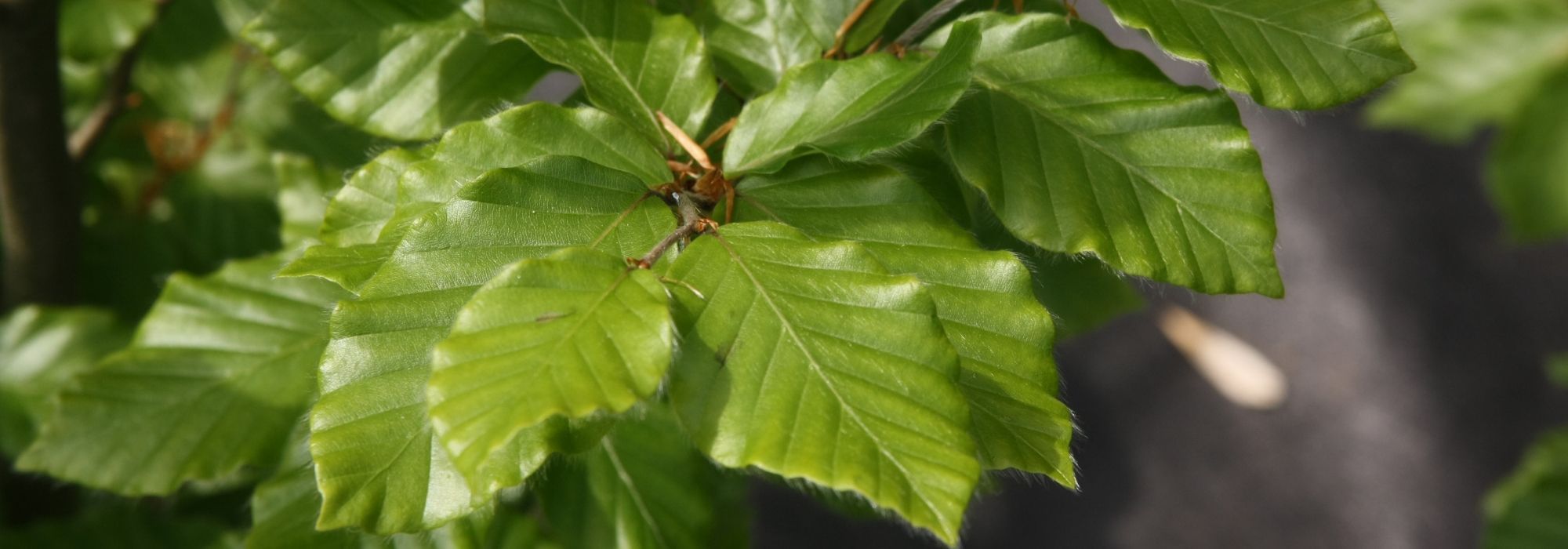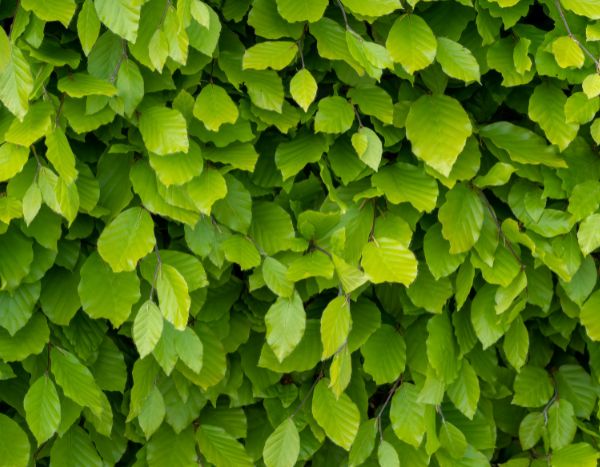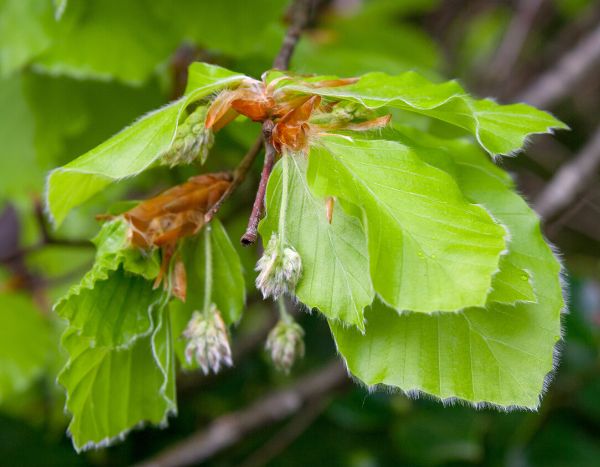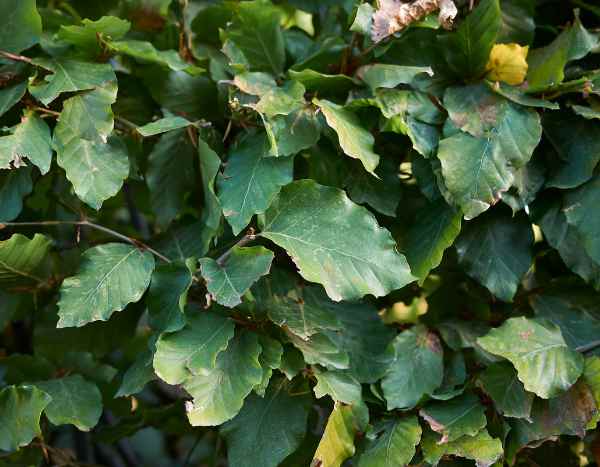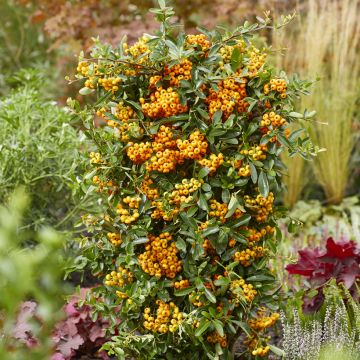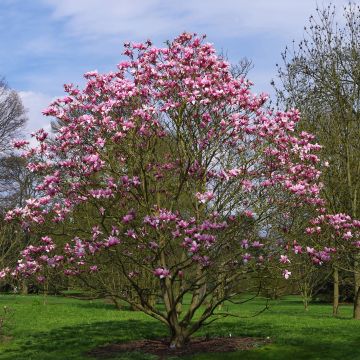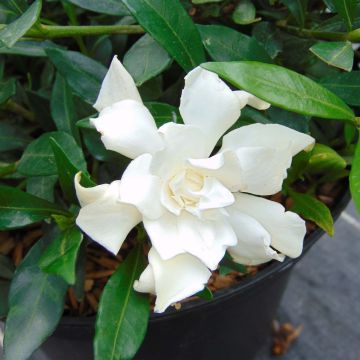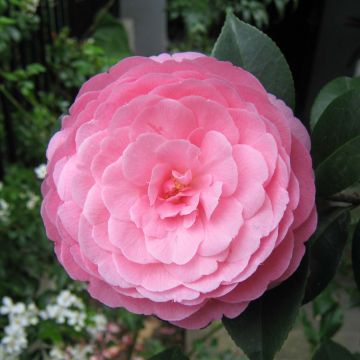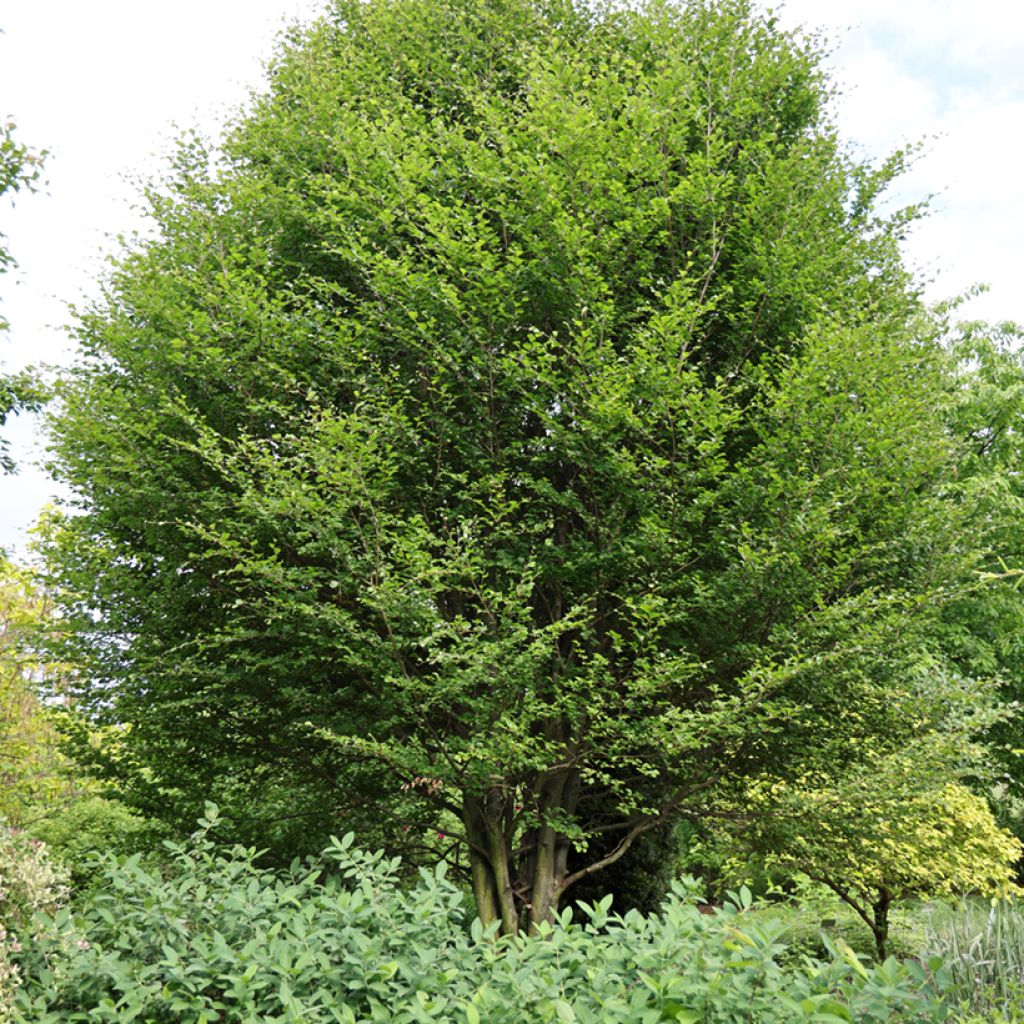

Fagus sylvatica Skrzat
Fagus sylvatica Skrzat
Fagus sylvatica Skrzat
European Beech, Common Beech
Special offer!
Receive a €20 voucher for any order over €90 (excluding delivery costs, credit notes, and plastic-free options)!
1- Add your favorite plants to your cart.
2- Once you have reached €90, confirm your order (you can even choose the delivery date!).
3- As soon as your order is shipped, you will receive an email containing your voucher code, valid for 3 months (90 days).
Your voucher is unique and can only be used once, for any order with a minimum value of €20, excluding delivery costs.
Can be combined with other current offers, non-divisible and non-refundable.
Home or relay delivery (depending on size and destination)
Schedule delivery date,
and select date in basket
This plant carries a 24 months recovery warranty
More information
We guarantee the quality of our plants for a full growing cycle, and will replace at our expense any plant that fails to recover under normal climatic and planting conditions.
Would this plant suit my garden?
Set up your Plantfit profile →
Description
Fagus sylvatica 'Skrzat' is a Polish variety of miniature beech, with very slow growth and a more or less pyramidal habit. It is adorned with small, almost round, very hairy, beautiful dark green leaves. It has a beautiful appearance with its dense silhouette, carried by a short trunk with beautiful grey bark. In autumn, the vegetation turns yellow-orange and the leaves persist on the tree for a long time, gradually browning. This very hardy, dwarf tree can be pruned as a bonsai to animate a cool rockery, or even grown in a container to enhance a terrace.
The Beech or Fagus is one of the members of the Fagaceae family, to which it gave its name, and which only includes seven to nine genera, of which it is the best known along with Oaks (Quercus) and Chestnuts (Castanea). The Fagus genus has only about ten species, with Fagus sylvatica being the common beech and one of its most beautiful subjects. This majestic tree, capable of reaching a height of 30 m, forms a straight, massive trunk, reaching 2 m in diameter, and covered with a beautiful smooth grey bark. The glossy dark green foliage is downy and remains on the tree for a long time in winter before falling, it is called marcescent. Of relatively slow growth, it forms magnificent forests in cool and humid climates. Climate change particularly threatens this species, which needs humidity and hates high temperatures and drought.
Fagus sylvatica 'Skrzat' is a horticultural variety born in 1996 that we owe to the Polish breeder Andrzjev Marczewski. It was then introduced to the market in 2008. This delay is explained by the slow growth of this miniature tree, which only grows 10 to 15 cm per year. In twenty years of cultivation, this miniature beech will only reach a height of approximately 1.50 m. The original plant, 30 years old, measures less than 3 m in height and it is estimated that at full maturity, the plant will remain under 5 m in height. This beech forms short lateral shoots, which rise at an angle of 45° with the trunk. Somewhat ungainly in its early years, it then densifies to take on a denser, more or less pyramidal habit, forming an ornamental silhouette. The young medium green leaves are slightly bronzed and reveal abundant down when they emerge from the long brown buds. They then turn dark green and take on an almost round shape, measuring only a few centimetres (3 to 4), thus well proportioned to the reduced dimensions of the plant. Such predispositions encourage treating this beech as a bonsai, in a container, or even in the ground by pruning it to give it an aged appearance. The flowering that occurs in April is relatively insignificant, presenting no ornamental interest, the same as the fruits (beech nuts) that follow. In autumn the small tree reveals a new advantage, its foliage turns a very pleasant yellow-orange. In the absence of wind and severe frost, the leaves remain on the tree for a long time, gradually browning before finally falling to the ground to make way for new shoots to come.
Fagus sylvatica 'Skrazt' will allow owners of small gardens to welcome one of the kings of our forests. You will need to be patient, as its growth is truly slow, but the result will be worth it. Instead of planting it in isolation, which will require you to wait a long time for future ornamental effect, integrate it into a small bed alongside other low-growing plants, on the edge of taller plants that will maintain a certain atmospheric humidity. Associate it with dwarf conifers that will be perfect companions, such as Pinus mugo 'Ophir', a superb mountain pine that forms a cushion of 1 m in all directions, with light green foliage that turns golden yellow in winter, allowing you to create a superb contrast. Abies koreana 'Kohout's Icebraker' is a fabulous compact fir that develops shoots with needles that have a very decorative white underside. After a few years, it also produces beautiful violet cones. Betula nana 'Golden Treasure' is a dwarf birch whose golden foliage will form a beautiful combination with the dark green of your miniature beech. And to add a touch of spring colour, nothing beats botanical tulip bulbs like Tulipa sylvestris, with its wild appearance, whose small yellow flowers will bring light to your scene. It will naturalise in your bed, forming a low carpet with proportions well suited to your small collection of dwarf trees.
Fagus sylvatica Skrzat in pictures
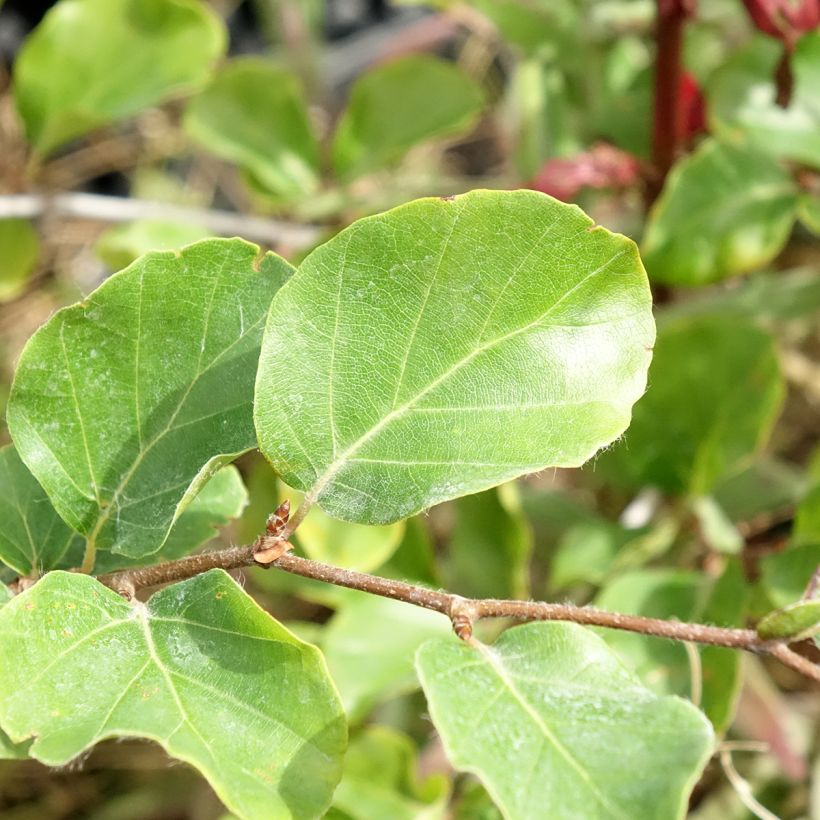

Plant habit
Flowering
Foliage
Botanical data
Fagus
sylvatica
Skrzat
Fagaceae
European Beech, Common Beech
Cultivar or hybrid
Planting and care
Fagus sylvatica 'Skrzat' grows in full sun or partial shade and thrives in cool and temperate climates. The soil should be moist and well-drained, with a constant level of humidity, as it does not tolerate drought or heatwaves. It can tolerate limestone, as long as the soil is sufficiently humus-bearing. Dig a hole with sides and depth of 50 or 60 cm, and add planting compost to the existing soil. Soak the root ball in a bucket of water for fifteen minutes before planting, place it in the ground, backfill around it, and water abundantly. Water regularly during the first two years, and pay close attention to watering during hot periods. In February and March, when the tree is dormant, remove any branches that compromise symmetry or are tangled to maintain a good habit. Monitor the foliage for the possible appearance of scale insects.
Planting period
Intended location
Care
Planting & care advice
This item has not been reviewed yet - be the first to leave a review about it.
Similar products
Haven't found what you were looking for?
Hardiness is the lowest winter temperature a plant can endure without suffering serious damage or even dying. However, hardiness is affected by location (a sheltered area, such as a patio), protection (winter cover) and soil type (hardiness is improved by well-drained soil).

Photo Sharing Terms & Conditions
In order to encourage gardeners to interact and share their experiences, Promesse de fleurs offers various media enabling content to be uploaded onto its Site - in particular via the ‘Photo sharing’ module.
The User agrees to refrain from:
- Posting any content that is illegal, prejudicial, insulting, racist, inciteful to hatred, revisionist, contrary to public decency, that infringes on privacy or on the privacy rights of third parties, in particular the publicity rights of persons and goods, intellectual property rights, or the right to privacy.
- Submitting content on behalf of a third party;
- Impersonate the identity of a third party and/or publish any personal information about a third party;
In general, the User undertakes to refrain from any unethical behaviour.
All Content (in particular text, comments, files, images, photos, videos, creative works, etc.), which may be subject to property or intellectual property rights, image or other private rights, shall remain the property of the User, subject to the limited rights granted by the terms of the licence granted by Promesse de fleurs as stated below. Users are at liberty to publish or not to publish such Content on the Site, notably via the ‘Photo Sharing’ facility, and accept that this Content shall be made public and freely accessible, notably on the Internet.
Users further acknowledge, undertake to have ,and guarantee that they hold all necessary rights and permissions to publish such material on the Site, in particular with regard to the legislation in force pertaining to any privacy, property, intellectual property, image, or contractual rights, or rights of any other nature. By publishing such Content on the Site, Users acknowledge accepting full liability as publishers of the Content within the meaning of the law, and grant Promesse de fleurs, free of charge, an inclusive, worldwide licence for the said Content for the entire duration of its publication, including all reproduction, representation, up/downloading, displaying, performing, transmission, and storage rights.
Users also grant permission for their name to be linked to the Content and accept that this link may not always be made available.
By engaging in posting material, Users consent to their Content becoming automatically accessible on the Internet, in particular on other sites and/or blogs and/or web pages of the Promesse de fleurs site, including in particular social pages and the Promesse de fleurs catalogue.
Users may secure the removal of entrusted content free of charge by issuing a simple request via our contact form.
The flowering period indicated on our website applies to countries and regions located in USDA zone 8 (France, the United Kingdom, Ireland, the Netherlands, etc.)
It will vary according to where you live:
- In zones 9 to 10 (Italy, Spain, Greece, etc.), flowering will occur about 2 to 4 weeks earlier.
- In zones 6 to 7 (Germany, Poland, Slovenia, and lower mountainous regions), flowering will be delayed by 2 to 3 weeks.
- In zone 5 (Central Europe, Scandinavia), blooming will be delayed by 3 to 5 weeks.
In temperate climates, pruning of spring-flowering shrubs (forsythia, spireas, etc.) should be done just after flowering.
Pruning of summer-flowering shrubs (Indian Lilac, Perovskia, etc.) can be done in winter or spring.
In cold regions as well as with frost-sensitive plants, avoid pruning too early when severe frosts may still occur.
The planting period indicated on our website applies to countries and regions located in USDA zone 8 (France, United Kingdom, Ireland, Netherlands).
It will vary according to where you live:
- In Mediterranean zones (Marseille, Madrid, Milan, etc.), autumn and winter are the best planting periods.
- In continental zones (Strasbourg, Munich, Vienna, etc.), delay planting by 2 to 3 weeks in spring and bring it forward by 2 to 4 weeks in autumn.
- In mountainous regions (the Alps, Pyrenees, Carpathians, etc.), it is best to plant in late spring (May-June) or late summer (August-September).
The harvesting period indicated on our website applies to countries and regions in USDA zone 8 (France, England, Ireland, the Netherlands).
In colder areas (Scandinavia, Poland, Austria...) fruit and vegetable harvests are likely to be delayed by 3-4 weeks.
In warmer areas (Italy, Spain, Greece, etc.), harvesting will probably take place earlier, depending on weather conditions.
The sowing periods indicated on our website apply to countries and regions within USDA Zone 8 (France, UK, Ireland, Netherlands).
In colder areas (Scandinavia, Poland, Austria...), delay any outdoor sowing by 3-4 weeks, or sow under glass.
In warmer climes (Italy, Spain, Greece, etc.), bring outdoor sowing forward by a few weeks.






























